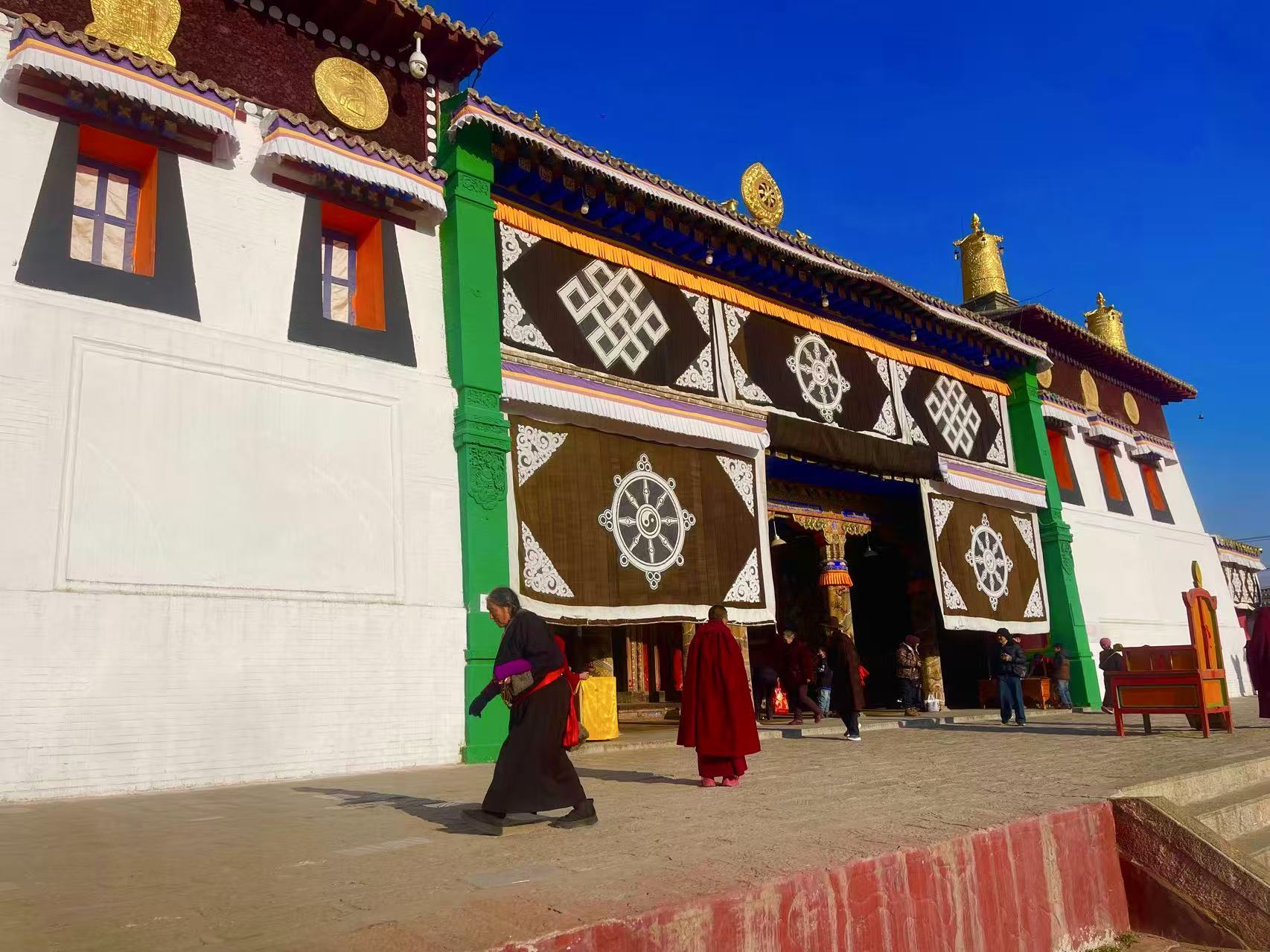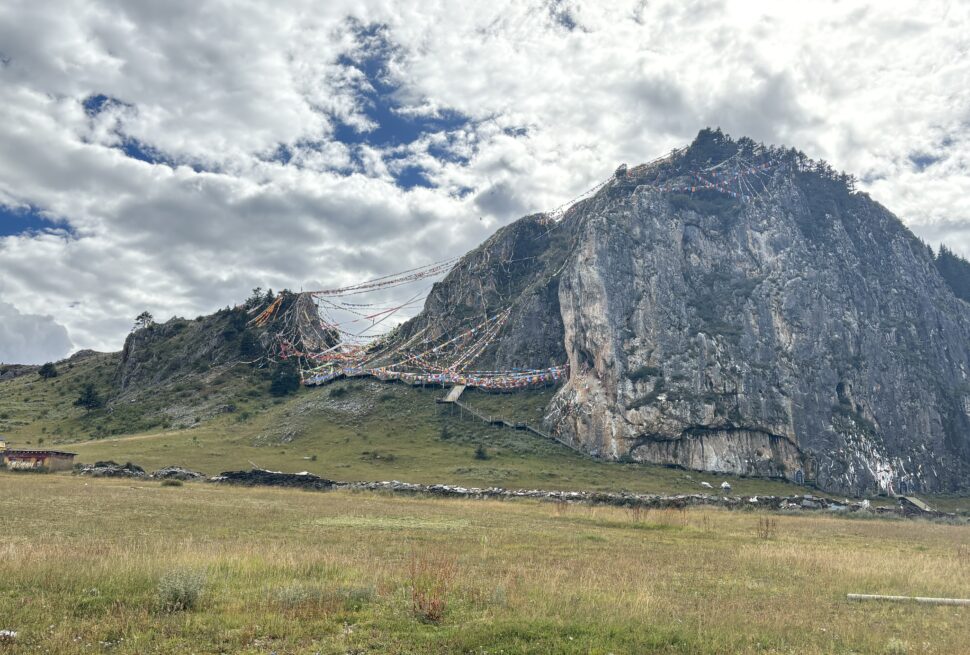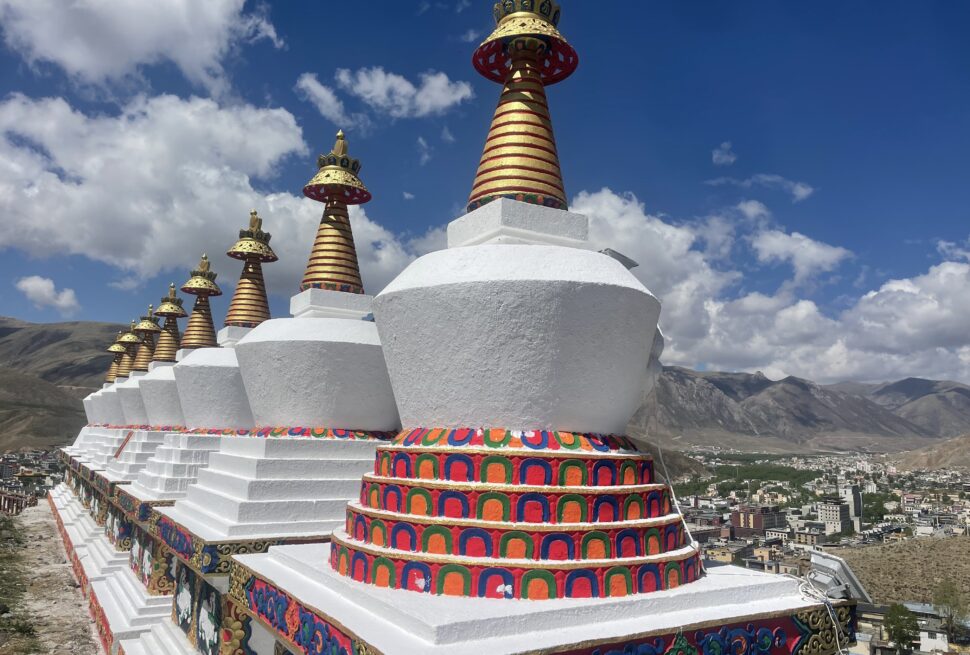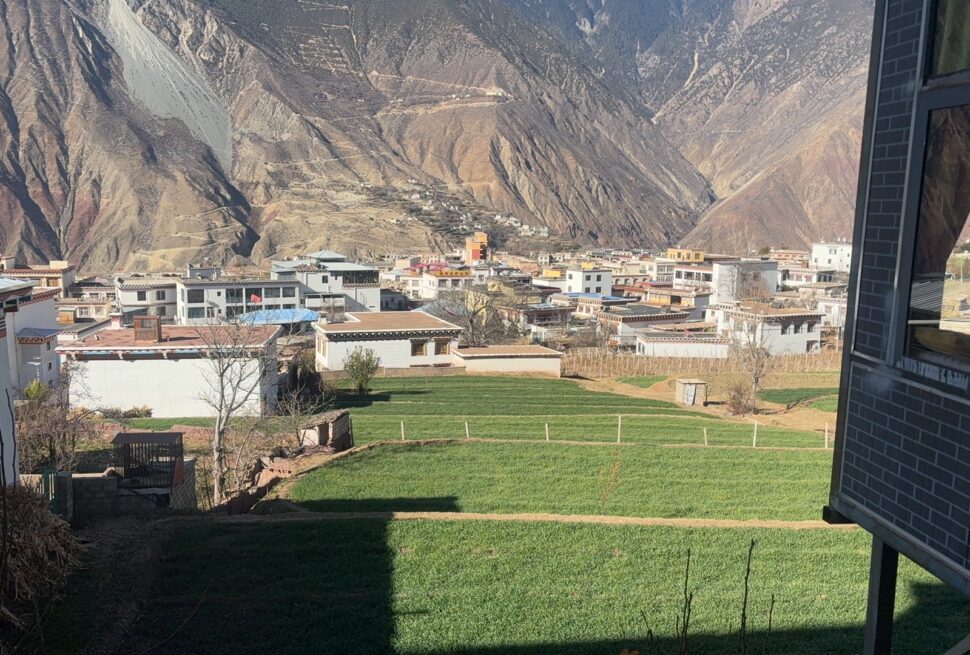Deep in the Yellow River valley of Amdo, Tibet, lies Rebkong (Tongren)—a town not marked by towering mountains, but by the delicate brushstrokes of its master artists. For centuries, it has been the unrivaled heart of Tibetan thangka painting, where sacred art is not preserved in museums, but lives in bustling workshops and monastic colleges. This is not just a place to visit; it’s a place to witness creation. As a Tibetan-owned agency, we guide you beyond the gallery to meet the artists, understand the symbolism, and experience the living tradition.
Cultural & Artistic Significance
Rebkong is most famous for its thangka painting tradition, with master artists whose lineages have been passed down through generations. In addition to thangka, the region is renowned for murals, sculpture, wood carving, metalwork, embroidery, and ritual mask-making. Art here is not merely decorative—it is a spiritual discipline and way of life.
Monasteries & Spiritual Life
The region is anchored by important monasteries such as Rongwo Monastery, which has long supported artists, scholars, and religious practitioners. Monastic festivals, cham dances, and seasonal rituals remain central to community life.
Festivals & Living Traditions
Rebkong is also known for its vibrant shamanic and religious festivals, where ancient Bon and Buddhist traditions coexist. These events provide rare insight into Tibetan spiritual practices that continue uninterrupted today.
Why Visit Rebkong
- Home of Tibetan master artists
2. UNESCO-listed thangka painting tradition
3. Deeply preserved Amdo Tibetan culture
4. Authentic village life and monastery rituals
5. Ideal for cultural, art, and festival-focused travel
Rebkong: Reasons Why It Became Tibet’s Art Capital
Rebkong (Tongren), in today’s Amdo region of Qinghai, is widely regarded as Tibet’s art capital because of its deep-rooted tradition of sacred Buddhist arts passed down for generations.
Birthplace of Thangka Masters
Rebkong is home to renowned thangka painting lineages whose techniques have been preserved for centuries.
Living Art Lineages
Art is taught through family workshops and monasteries, not classrooms, keeping styles authentic and uninterrupted.
Complete Sacred Arts Tradition
Beyond painting, Rebkong excels in sculpture, wood carving, mural painting, metalwork, embroidery, and ritual mask making.
Strong Monastic Influence
Major monasteries such as Rongwo Monastery supported artists, commissioning religious artworks that shaped Tibetan visual culture.
UNESCO Recognition
Rebkong’s thangka painting tradition is listed as Intangible Cultural Heritage, confirming its global cultural importance.
Art as Daily Life
In Rebkong, art is not decorative—it is spiritual practice, livelihood, and identity.
Top 3 Places to Experience Thangka Art in Rebkong
- Upper Wutun Monastery
- Lower Wutun Monastery
- Rebkong Thangka Art Center
Rebkong offers travelers a rare opportunity to experience living Tibetan art and spirituality in its most authentic form.




